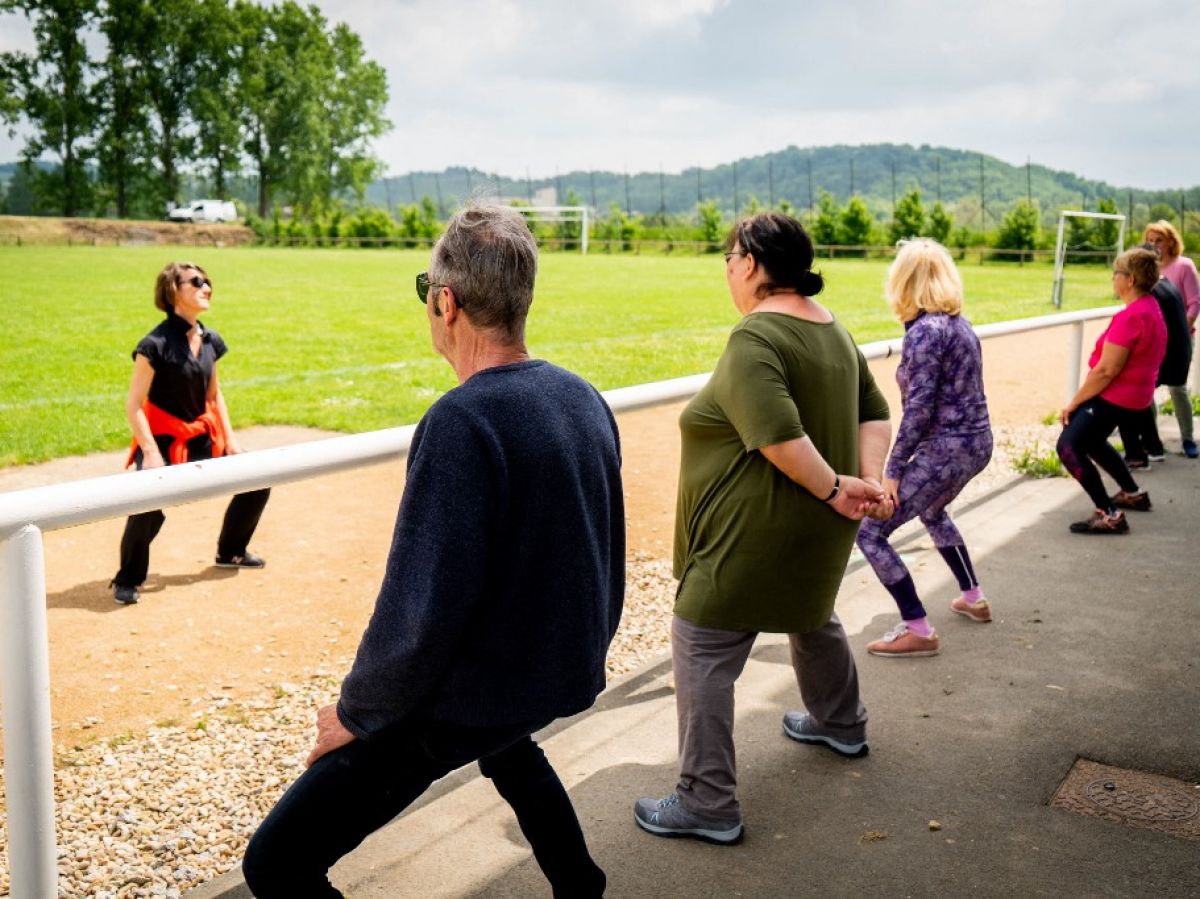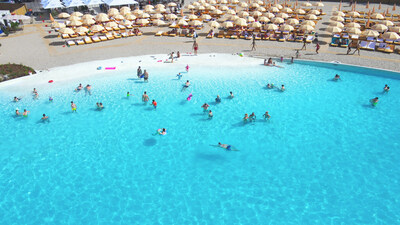One in two French people do not practice any sport. Near'one in two French people is overweight orobesity. Three out of 10 men and 4 out of 10 women do not meet the recommendations for physical activity.
On the contrary, medical discoveries regularly point towards the benefits of physical activity to prevent or regulate many chronic illnesses. A sport, adapted to a patient and his pathology, is a treatment in the same way as a medicine. The sport prescribed by prescription is slowly making headway in France, but use of the device still remains too timid due to numerous obstacles.
What is prescription sport?
Health administrations and doctors prefer to talk about “adapted physical activity” (APA). The word “sport” would not be relevant in the field of care. The word has too much connotation: performance, surpassing oneself, which causes injuries... The term seems incompatible with a reduced physical condition.
APA, prescribed by prescription, is You can also find out more about the following: for any person suffering from a chronic illness, a long-term condition, a situation of loss of autonomy (disability or old age) or presenting risk factors such as overweight, obesity, malnutrition or high blood pressure. This involves providing safe support to people who have never practiced sporting activities or who have turned away from them, for fear of pain, lack of time and motivation. The first step always costs, and this APA prescription would help motivate the patient.
But beware ! Big downside, sport on prescription does not mean reimbursement of practice costs. Unfortunately, it is not covered by Health Insurance like treatment based on medication or a biological examination would be. Certain communities or mutual societies are likely to cover part of the cost of these sports sessions.
Adapted physical activity is entitled to a definition in the Public Health Code. The health authorities believe that even if it is not reimbursed, this physical activity will be better followed if it has been the subject of a written prescription.
Why prescribe sport to patients with chronic illnesses?
- Chronic diseases are on the rise in the French population. This proportion of patients is increasing within an aging French population, but also at the bottom of the social ladder. In 2021, it was estimated 12 million the number of people affected by chronic illness.
- Sport as complementary care. In 2019, a group of Inserm experts looked at the Donees available from the scientific literature to evaluate the effects induced by physical activity on patients suffering from chronic diseases: “ The benefit/risk balance of physical activity is systematically favorable,” concludes this collective of experts. Physical activity must be seen as an essential complement to drug treatment.
Read alsoAll sports are good against chronic diseases
- Multiple beneficial mechanisms to move when you are sick. Hypertension, hypercholesterolemia, obesity and overweight, cancers under treatment or stabilized, type 2 diabetes, cardiovascular diseases, osteoarticular pathologies, stroke, stress, anxiety, mild to moderate depression... Difficult to be exhaustive, as the benefits ofphysical activity on our health. THE " muscle deconditioning“ is the common point of many pathologies: the muscles weaken, the fatty tissues increase while the weakened and discouraged patient reduces his mobility and settles into a sedentary lifestyle. Conversely, muscular activity is known for its anti-inflammatory effects and reduces pain by releasing proteins, myokines. This same process also has effects on the Neurogenesis and the creation of micro-vessels of the brain. The increased heart rate and shortness of breath increase respiratory capacity and have a positive effect on the blood vessels.
Read alsoWhat are the benefits of sport on each organ of the human body? Science answers this question
On the worrying chapter of cancers, 40% of them could be avoided with physical activity which has a cooling effectMitigation on several risk factors: overweight, obesity, less exposure to carcinogenic agents in the diet thanks to accelerated intestinal transit, stimulation of the immune system and hormone production. Physical activity can help rebuild oneself psychologically and combat fatigue from radiotherapy or chemotherapy sessions.
Another indirect effect is that “sport on prescription” becomes a valuable social activity for the weakened patient locked in by his illness. It allows him to renew social ties during joint sports sessions, to share his experiences with other patients suffering from the same pathology.
Which professionals can support this “sport on prescription”?
THE Speakers able to supervise this adapted physical activity are: masseurs-physiotherapists, occupational therapists and psychomotor therapists, qualified professionals in the field of adapted physical activity. The certification of these professionals can also be issued by an approved sports federation.
What structures can support this “sport on prescription”?
- The Maisons Sport-Sante created in 2019 are the most typical structure of this support towards APA. They have a very variable status and operation from one place to another. They perform a physical fitness assessment allowing a cardiological and muscular assessment, prepare a personalized training plan then training sessions. Some centers only take care of patients with cancer, other centers take care of all pathologies. To find the House closest to you, a database is accessible on the website of the Ministry of Sports.
- Cancer Environment Portal from the Leon Berard Center (Lyon)
- French Federation of Physical Education and Voluntary Gymnastics
- The regions and departments list the APA offers on their territory, links have been brought together on the APA website. France Assos Sante, an organization representing patients and users of the health system.
- L'phone book professional teachers in APA
- For cancer patients: CAMI Sport and Cancer, Blue Siel
How to get a prescription for appropriate physical activity?
Before taking any action, you must not forget that there is no coverage by Health Insurance. The reimbursement of sports session costs for health reasons is not at all envisaged at the moment by the health authorities.
Health Insurance offers on its Sites that you can use to learn more about a self-questionnaire aimed at the general population in order to identify situations requiring medical advice: this may be age, pregnancy, disability, cardiovascular, respiratory, metabolic or renal disease, cancer, frailty bone, muscle or joint…
A doctor, general practitioner or specialist, can prescribe an adapted physical activity recommendation after having given his patient a series of flexibility, endurance, balance and strength tests. This prescription will be useful before contacting a Maison Sport-Sante or any other structure mentioned above.
What obstacles for “sport on prescription”?
The “sport on prescription” system was born in eastern France in 2012. Since its deployment, we have noted disparities in territorial care but also according to the profile of doctors and patients.
Read alsoPrescription sport is dope in eastern France
L'National Institute of Youth and Popular Education (INJEP) highlighted in 2023 in a balance sheet on the Maisons Sport-Sante network “ difficulties in mobilizing doctors and reaching all audiences, as well as insufficient sustainable funding”. The non-reimbursement of these sessions is certainly one of the main obstacles. At the end of 2023, the government opted for a two-year experiment consisting of financing adapted physical activity for patients treated for cancer. The measure disappointed the organizations of patients, users and health professionals who demand support from the “ national solidarity » of this APA.
Professor Francois Carre, speaking in 2022 on behalf of France Assos Sante regretted “ the lack of training for doctors on prescribing methods, which explains the insufficient participation of the medical profession, particularly in the city, and the almost total lack of care” and add: “ Not prescribing appropriate physical activity to a chronic patient is a waste of opportunity for them”.
Read alsoTo increase your life expectancy, practice any sport
For the practitioner, it is a question of convincing a patient who lacks time or money, who fears injury. Professor Gregogy Ninot, specialist in non-drug interventions and expert working on the 2019 Inserm report on the benefits of physical activity cited previously, explained: “30% patients are adherent in the long term, thanks to the use of the prescription, rather than the recommendation (…) but we also have some 30% who give up after six months”.


